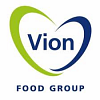Case Studies » VION Llay

The challenge
The VION Mill occupies a large industrial site on the outskirts of Llay, Wrexham. Facilities allow manufacture of largely poultry feed to suit an extensive client base. Bulk material inputs include wheat, barley and soya which are ground on site prior to formation of pellet or mash products. A number of other raw materials may be added to allow specific variations in formulation to be achieved in production of over 250K tonnes of feed per annum.
Many site activities are associated with bulk storage or production may incur some degree of fire & explosion risk unless ventilation and ignition controls are adequate though most operations are carried out in purpose-designed equipment.
The solution provided
Fire or explosion hazards arise when vapour or dust clouds are present in areas where there may be an ignition source - for example flammable material dispensing close to unprotected electrical equipment. Most materials were supplied via contained bulk transfer systems so that airborne dust cloud hazards or dust deposits, were insignificant. Indeed limited hand dispensing, packaging or filling operations occurred in open areas and reflected good housekeeping controls for combustible solids.
Based upon survey evidence and feedback, there was good organisation and electronic management of bulk transfers. Operations involving combustible feedstuff components were routinely carried out in purpose-designed silos, conveying and press equipment. DSEAR hazards from standard mash production were as expected in a feed mill, but increased where product formulation involves additional grinding or sieving operations.
Many organic dusts burn readily and may be ignited by overheated motors, sparks of sufficient energy, badly maintained heaters and sources such as open flames or maintenance tasks. At time of survey, control measures appeared effective in regard to Vion plant operations and extensive management arrangements evident, including equipment maintenance schedules.
Hazardous zone arrangements were identified in the report in appropriate locations where the risk of explosion and need for suitable controls was greatest. Given that complete eradication of flammable materials and/or use of purging options are limited for processing carried out at the site, the basis of safety in zones was ti ensure suitable ventilation and ignition controls. Ventilation improvements were suggested in the action plan.
Your professional and knowledgeable approach was much appreciated.
Tec Lewis, OHSE Manager (Central) Agriculture

